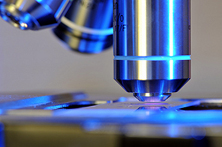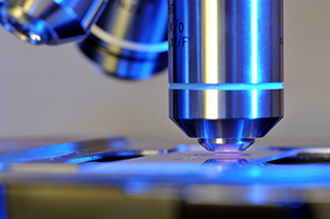Honey, They Shrunk the Microscope !

 In a latest development in the field of microscopy, a group of researchers from the Stanford University led by Professor Chris Contag have developed a tiny implantable microscope that can image tissues and cells from inside the body . This tiny implantable microscope can easily replace the traditional method used to visualize tissue samples, which involves embedding biopsied tissue samples in paraffin, slicing thin films out of it and observing them under microscope.
In a latest development in the field of microscopy, a group of researchers from the Stanford University led by Professor Chris Contag have developed a tiny implantable microscope that can image tissues and cells from inside the body . This tiny implantable microscope can easily replace the traditional method used to visualize tissue samples, which involves embedding biopsied tissue samples in paraffin, slicing thin films out of it and observing them under microscope.
This new research, close to the stuff out the movie “Honey I Shrunk the Kids” sans a shrunken car floating inside the digestive tract and blood vessels enables real time visualization of interactions between immune cells and tumors inside the body for days to weeks at a time. Until now, the closest one has come to observing living cell interactions is by making an incision in the mouse skin and pinning it back under the objective of a standard microscope and observing it , not for more than 6 hours at a stretch. But this method can’t be used on humans. But this microscopic device, with a resolution of 0.1 microns is made of aluminum coated silicon wafers and has a dimension of 3mm by 5mm . It can be directly implanted inside the body.
This new tiny microscope, still has few issues that needs to be ironed out before it can be made available for normal routine usage. One of the issue being power supply and image retrieval , which is currently managed using wires that stick out of the skin. But it increases the possibility of infection or form scar tissue, posing a hazard to organism and hampering image quality. The device works using lasers and costs about $10000 a piece. The team currently focused on creating untethered implantable devices that are inexpensive and disposable so that it can be widely used for medical and research purposes.

